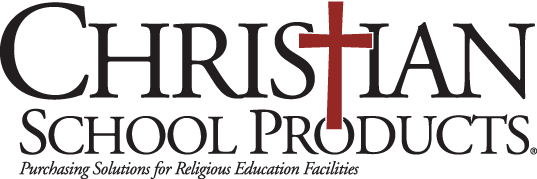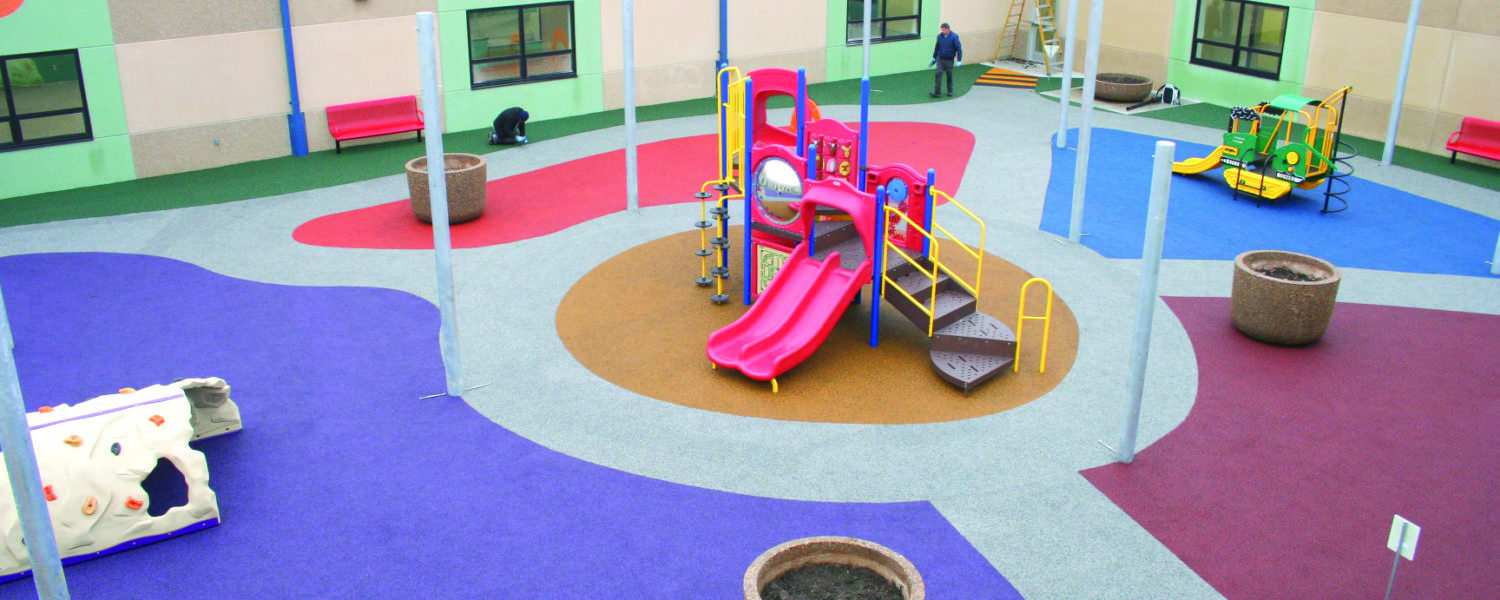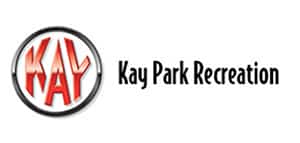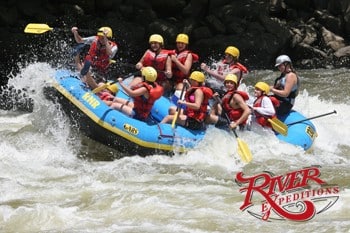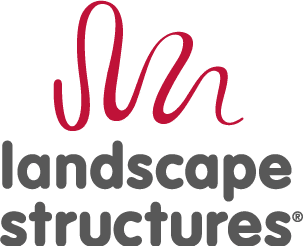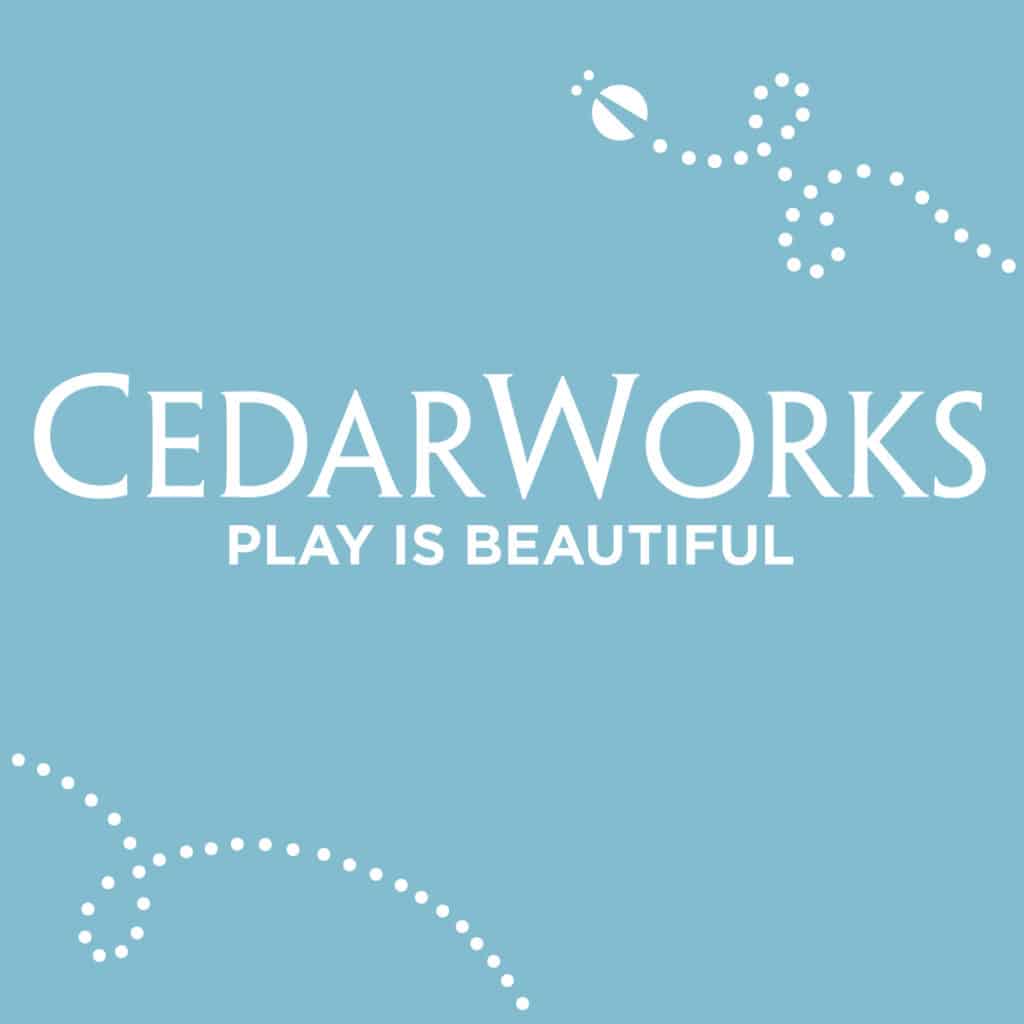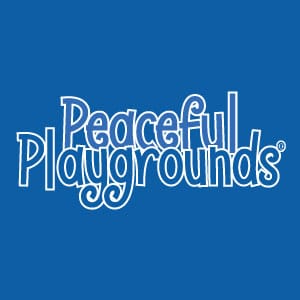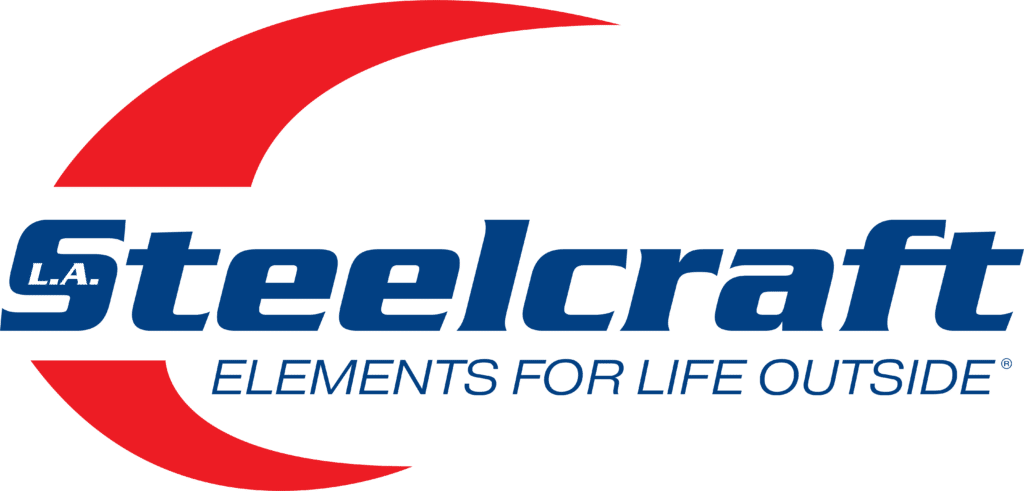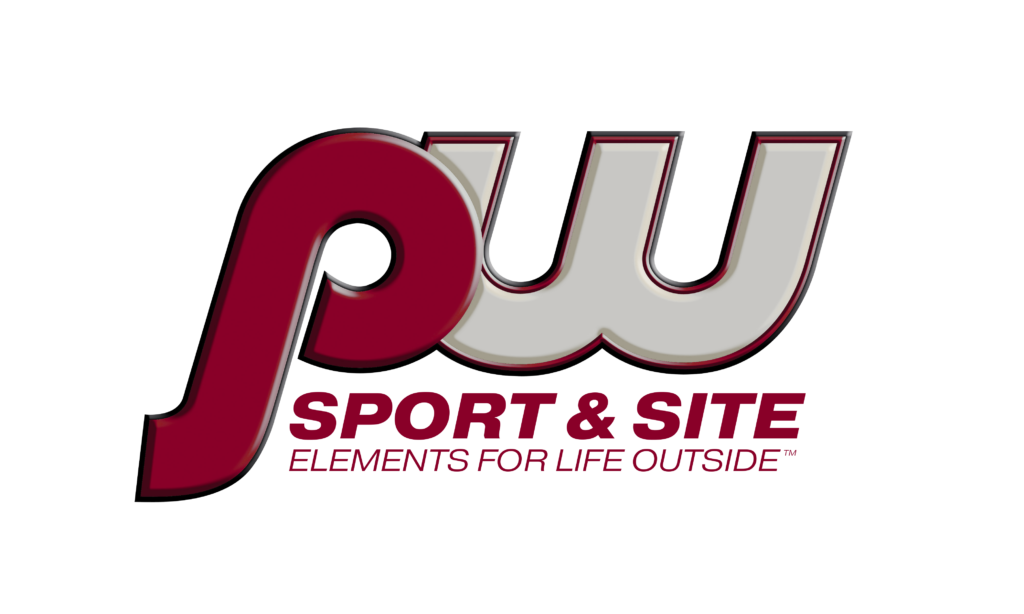Did you know that roughly 70 percent of all playground related injuries are caused by falls from playground equipment? When building a playground environment, your choice of surfacing should be the most important factor.
One of the most important things we can do to help provide a safe play environment is to include a high impact safety surface when designing and building a playground. Falls onto hard playground surfaces such as dirt, grass, and asphalt can be very serious and even life threatening.
When designing your playground surface, you will want to consider multiple factors: Safety, Accessibility, Life Span, and Cost. Choosing a playground surface that provides high impact safety is of the utmost importance. Many different surfacing options provide good drainage, high durability with minimal maintenance.
You will also need to evaluate your playground accessibility needs when choosing the correct surface. As more playgrounds are becoming inclusive to allow all children the chance to play, ADA accessible surfacing is becoming a popular surfacing option. When choosing your playground surface, you will want to make sure that the surface type has been tested to meet or exceed certain standards.
Two of the most important standards to watch for are ASTM F1951, Standard Specification for determination of accessibility of surface systems under and around playground equipment, and ASTM F1292, Standard Specification for impact attenuation of surfacing materials within the use zone of playground equipment.
Poured in place, bonded rubber mulch, and synthetic turf are all surfacing options that meet or exceed these standards. When choosing your surface, you will want to make sure to request the testing documentation showing that the particular surface meets or exceeds these standards.
HIC and GMAX testing is highly recommended by a third party when the surface is complete to make sure that the surfacing meets or exceeds ASTM F1292 specifications.
In addition to making sure your surface choice meets or exceeds the standards, you will also want to think about the pros and cons of each surface type. Some surfaces require more maintenance than others or could have pieces that may be a choking hazard to smaller children. The manufacturer’s warranty for a particular surface should also be considered when choosing your surface.
Here are the most common choices for playground surfacing:
Loose Fill Servicing Options: Wood Mulch, Rubber Mulch and Pea Gravel
These are your most economical types of playground surfacing. When choosing loose fill, you will need to consider the age group. It is not recommended for infants or smaller children. Smaller children may put them in their mouths, creating a choking hazard. It also provides an uneven surface for smaller children to crawl on. The Subbase for these surfaces is just a level area of ground or dirt. A weed mat is suggested to be put down first, to keep grass or weeds from growing through the surface area.
Wood Mulch can be purchased by any landscaping company. However, you should always let them know that you want Certified Playground mulch, not just landscaping mulch. Certified Playground mulch should not contain large sticks, which can cause injury with splintering.
Rubber Mulch is shredded rubber tires that has the steel pulled out made in to 3/4” cubes for a softer fall. Make sure again that you ask for Playground Certified Rubber Mulch, not just landscaping mulch. Landscaping Rubber Mulch does not go through the extra care to make sure all the steel is pulled out for the safety of the children.
Pea Gravel can be purchased from any rock quarry. Make sure to ask for Playground Certified Gravel to insure the correct size and cushioning.
Unitary Servicing Options: Turf, Poured in Place, Rubber Tiles, and Bonded Rubber Mulch
These options are higher in price but last longer than your traditional loose fill options. They require little or no maintenance. All of these surfaces must be put down on an AB3 rock, asphalt or concrete subbase, which can also add to the higher cost.
Synthetic Turf is synthetic grass. It is glued to a 2” foam pad to create a fall safety zone. Synthetic Turf creates natural realistic outdoor playground areas. It is highly durable, drains quickly, and requires little maintenance.
Poured in Place is a bonded shredded tire buffing with an EPDM color top mixed and poured out similar to asphalt. It creates a highly durable, seamless slip-resistant surface, providing soft cushioned comfort in variety of color combinations. Poured in Place surfacing allows you the freedom to choose colors, designs, logos, games, and patterns.
Rubber Tiles is a rubber-based product cut in to 1” to 2” thick tiles and are interlocking and glued together to make a solid mat. Rubber tiles provide good shock absorption and are highly durable.
Bonded Rubber Mulch is a single layer system with the appearance of real mulch. It is made with the highest quality binder to eliminate constant replenishment with loose fill options. Bonded rubber mulch provides a seamless slip resistant surface, is highly durable, and very easy to maintain.
In order to create the highest quality playground surfacing, total quality management should be upheld. This starts with the raw product selection and ends with the final installation process. Only a highly qualified and trained crew should be installing your safety surface, and only the highest quality materials should be used in the manufacturing process.
When choosing your playground safety surface, the most important thing to keep in mind is what will be the best option to help minimize critical injuries from falls. Safety is first and foremost and begins with a safe surfacing option and a qualified surfacing contractor and installer.
This information is courtesy of Ecoturf Surfacing represented by Constructive Playthings Playground, which offers complete playground solutions. Their dedicated specialists can help from start to finish, with design, enhancing, surfacing, and installation services, www.constructiveplaythings.com.
